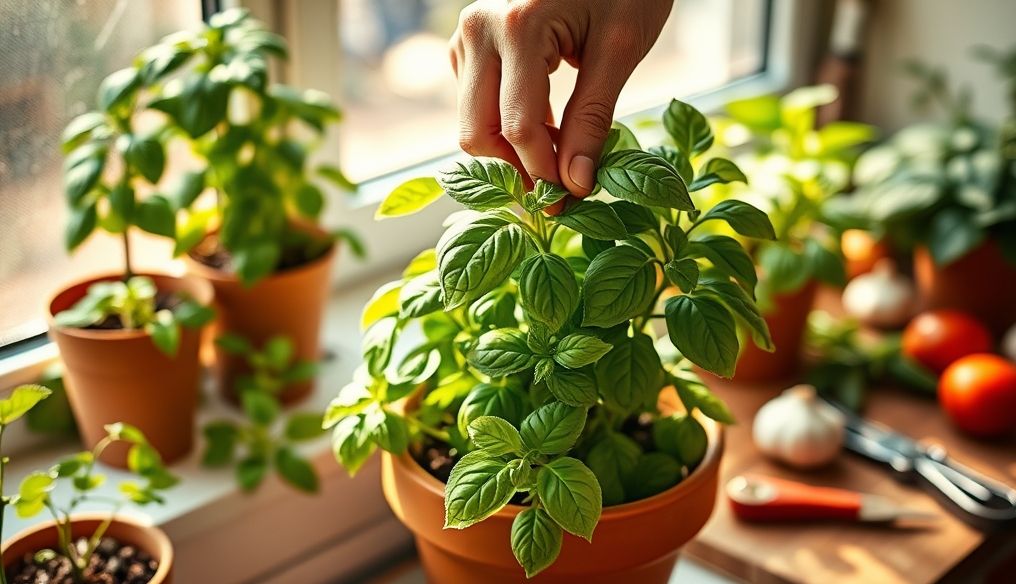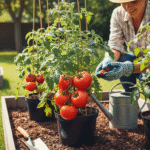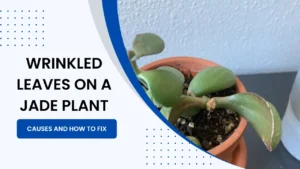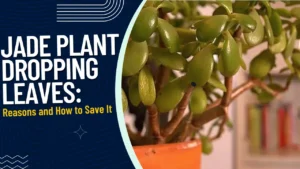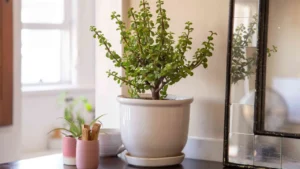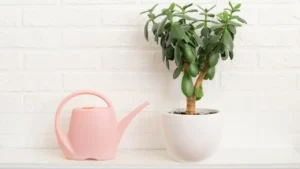Welcome, fellow gardeners and home cooks! If there is one herb that embodies the warmth of summer, the vibrancy of the Mediterranean, and the sheer joy of fresh, homegrown flavor, it is the magnificent Basil (Ocimum basilicum). For over two decades, my life has been filled with the unmistakable, heady aroma of this incredible plant, from sowing the first tiny seeds to harvesting gallons of leaves for pesto.
Basil is one of the most beloved herbs in the world, cherished for its intense aroma, distinctive flavor, and surprising health benefits. Whether you’re making a classic Caprese salad, an authentic Pad Thai, or a soothing cup of herbal tea, basil is an essential culinary companion.
The good news is that learning how to care for a basil plant is remarkably straightforward. It thrives indoors on a sunny windowsill or outdoors in a vibrant herb garden. With the right care—a few simple, consistent steps I’ve learned over a lifetime of growing—you can ensure a continuous, abundant harvest of tender, flavorful leaves all season long. Let’s dig in!
Table of Contents
Basil Plant Overview
Basil is a fragrant annual herb belonging to the mint family (Lamiaceae). It typically exhibits a bushy, upright growth habit with bright green, slightly cupped, oval-shaped leaves and square, often purple-tinged, stems. While most people grow it as an annual, providing it with excellent conditions can keep it productive for many months.
The world of basil is wonderfully diverse! While Sweet Basil is the king of pesto and Italian cuisine, you’ll also find:
- Thai Basil: With a strong, anise-like flavor and often purple stems, perfect for Southeast Asian dishes.
- Lemon Basil: A zesty variety that adds a bright citrus note to fish and poultry.
- Cinnamon Basil: With a hint of spice, great for baking and preserves.
- Holy Basil (Tulsi): Revered for its medicinal properties and distinctly spicy, musky aroma.
No matter the variety you choose, the core basil plant care tips remain the same.
Basil Plant Quick Care – Table Format
| Scientific Name | Ocimum basilicum |
| Common Name | Basil, Sweet Basil, Great Basil |
| Native Region | Tropical regions of Central Africa and Southeast Asia |
| Light Requirements | Full Sun (6–8 hours direct sunlight) |
| Watering Needs | Consistent Moisture, but not soggy |
| Propagation | Seeds or Stem Cuttings |
| Toxicity | Generally Non-Toxic to Humans and Pets |
| Growth Rate | Fast |
| Ideal Temperature | 65∘F to 80∘F (18∘C to 27∘C) |
Basil Plant Requirements – Table Format
| Requirement | Detail |
| Hardiness | Tender Annual (Does not tolerate frost) |
| Climate Zones | Typically grown as an Annual in all zones; Perennial in zones 10-11 |
| Plant Type | Herb, Annual (tender perennial) |
| Plant Family | Lamiaceae (Mint Family) |
| Plant Genus | Ocimum |
| Season of Interest | Spring, Summer, and early Autumn |
| Height | 12 to 24 inches (30 to 60 cm) |
| Spread | 12 to 18 inches (30 to 45 cm) |
| Spacing | 10 to 12 inches (25 to 30 cm) |
| Depth | Seeds shallowly sown; plants transplanted at the same level |
| Maintenance | Moderate (Requires regular pinching/harvesting) |
| Soil Type | Rich, well-draining loamy soil |
| Soil pH | Slightly acidic to neutral (6.0 to 7.5) |
| Soil Drainage | Excellent – must not hold standing water |
How to Care for a Basil Plant: Expert-Backed Care Instructions
After decades of getting my hands dirty, here are the detailed, experience-based secrets to growing thriving basil, year after year.
Basil Plant Light Requirements
Basil is a true sun-worshipper. To achieve that robust flavor and vigorous, bushy growth, it requires ample light.
Outdoors: Plant in a spot that receives a minimum of six to eight hours of direct sunlight daily. Less light will result in leggy plants with smaller, less flavorful leaves.
Growing Basil Indoors: This is where many beginners stumble. A regular windowsill rarely provides enough sun. For successful indoor growth, place your basil in a south-facing window or, even better, supplement with a full-spectrum grow light running for 10 to 12 hours a day. This is the only way to replicate the intensity of the summer sun.
🌿 Pro Gardener Tip: If your basil leaves are turning pale and your stems are stretching thin, it’s a clear cry for more light. Move it! My best indoor harvests always come from basil sitting directly under a simple shop-light fixture outfitted with “daylight” LED tubes.
Basil Plant Watering
Basil needs consistent moisture, but it absolutely hates sitting in soggy soil. Getting the watering basil balance right is the most critical factor for a happy, healthy plant.
- The Feel Test: Water deeply when the top inch of soil feels dry to the touch. In the height of summer, this might be daily!
- Outdoor Basil: Mulch heavily around the base of the plant (but not touching the stem) with straw or shredded leaves to help retain moisture and keep the roots cool.
- Potted Basil: Water slowly until you see it draining freely from the bottom holes. Never let your potted basil sit in a saucer full of water for more than an hour. Soggy roots lead to root rot, the silent killer of basil.
🌿 Pro Gardener Tip: If your basil droops dramatically in the afternoon sun, it’s thirsty. A quick, deep drink will revive it within an hour. If it droops first thing in the morning, the problem is likely overwatering and poor drainage.
Basil Plant Soil
Basil thrives in rich, well-draining, loamy soil. It’s a hungry plant!
- In-Ground: Amend your garden bed with plenty of good quality compost before planting. This ensures a rich source of nutrients and excellent structure.
- Pots/Containers: Always use a high-quality, sterile potting mix. I typically mix my potting soil with about 20% perlite or coarse sand to guarantee superb drainage.
Best Pot for Basil Plant
Drainage is non-negotiable. Choose a pot made of terracotta or a similar porous material, as this allows excess moisture to evaporate through the sides.
- Size Matters: A single supermarket basil plant will quickly outgrow its small container. Repot it into a container that is at least 8 to 10 inches (20 to 25 cm) in diameter to give it room to develop a strong root system.
Repotting Basil Plant
Supermarket basil plants are often grown in crowded bunches, which is why they tend to struggle after you bring them home.
- The Separation Technique: When you buy one of those lush, potted grocery store plants, gently remove it from the container and soak the roots briefly in water. Carefully separate the clump into three or four smaller individual plants. Repot these separately into fresh soil. This simple step is a game-changer for long-term survival and harvest.
Basil Plant Temperature and Humidity Requirement
Basil hates the cold!
- Temperature: It prefers warm conditions, ideally between 65∘F and 80∘F (18∘C and 27∘C). Do not plant it outdoors until all danger of frost is completely past, and nighttime temperatures are consistently above 50∘F (10∘C).
- Humidity: Average household humidity is fine. If you’re growing basil indoors in a very dry environment, an occasional misting can help, but ensure good air circulation to prevent fungal diseases.
Basil Plant Pruning (Pinching and Harvesting Tips)
The key to a bushy, prolific basil plant is regular harvesting—or what we gardeners call “pinching.” This is essential!
- Locate a Node: Find where a pair of leaves meets the main stem (a node).
- Pinch Above the Node: Using clean shears or your fingernails, cut the main stem just above that node.
- Encourage Bushiness: By cutting the main stem, you force the two small side shoots at the node to grow into new main stems. This doubles your harvest and prevents the plant from becoming tall and leggy.
- Stop Flowering! Always pinch off any developing flower buds. Once basil flowers, its leaves stop growing and put their energy into seed production, drastically reducing flavor and leaf production (a process called bolting).
🌿 Pro Gardener Tip: Never strip a basil plant of all its leaves! Always leave at least two to three sets of healthy leaves on the bottom part of the stem to ensure it has enough surface area to photosynthesize and recover quickly.
Basil Plant Fertilizer
Since you’re constantly harvesting basil leaves (and thus removing nutrients), the plant needs steady feeding.
- Outdoor/Container Basil: Use a balanced, water-soluble fertilizer once every three to four weeks. I prefer one that is higher in nitrogen (the first number in the N-P-K ratio) to encourage lush foliage growth.
- Mistake to Avoid: Don’t over-fertilize! Too much fertilizer, especially synthetic kinds, can lead to quick, weak growth and make the leaves taste bitter. Good compost and a light hand with a balanced feed is always best.
Basil Plant Pests and Diseases
The most common issues are usually related to water and air circulation.
- Fungal Diseases (like Downy Mildew): This is characterized by yellowing on the top of the leaf and a grayish-purple fuzz underneath. It’s rampant in high humidity and poor air circulation. Solution: Ensure proper spacing and water only at the base of the plant, avoiding wetting the leaves.
- Pests: Aphids, spider mites, and whiteflies can be attracted to basil. Solution: Spray with a gentle stream of water to knock them off or use a mild insecticidal soap in the early morning or evening.
Conclusion
I hope this detailed guide gives you the confidence to start or expand your basil-growing adventure. Learning how to care for a basil plant is truly a simple pleasure. It’s all about providing sun, consistent water, and the most crucial step of all: harvesting frequently.
There is no greater satisfaction than stepping into your garden or kitchen, clipping a handful of leaves, and instantly transforming a simple dish into an aromatic masterpiece. A tiny kitchen herb garden is a gateway to a whole new world of fresh, authentic flavors. Start small, be consistent with your care, and soon you’ll have more basil than you know what to do with—which, of course, means it’s Pesto Time! Happy gardening!

